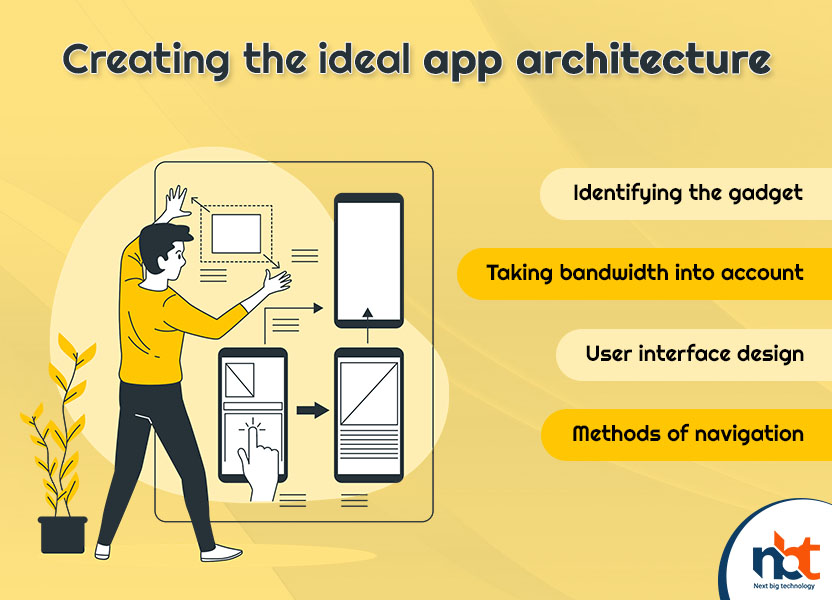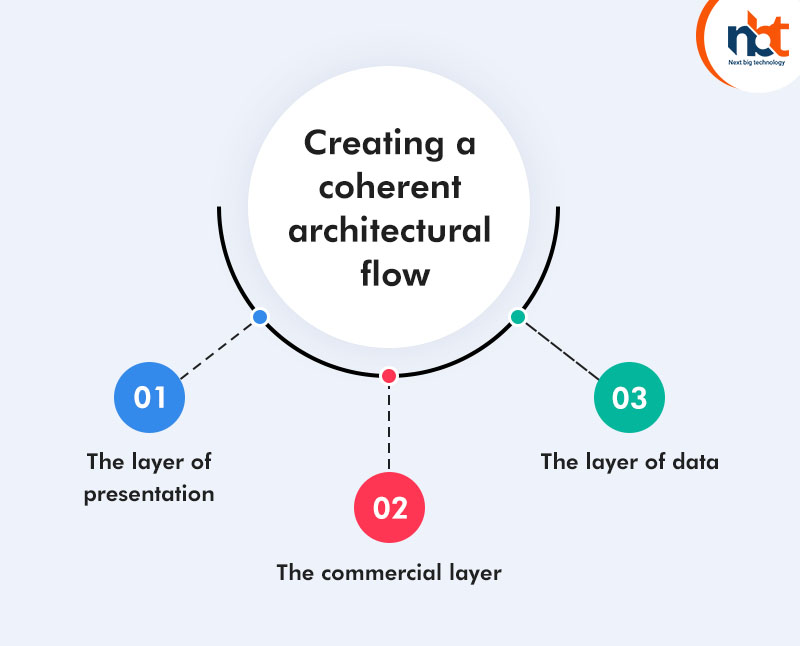Firm houses are using mobile applications to improve the production of their business, bypassing traditional procedures.
According to a research, worldwide mobile app revenue is predicted to reach $77 billion in 2017, a significant increase from $58 billion in 2016.
The main reason for this is because there are flaws in the mobile app architecture and development process.
An organised mobile app requires following a set of patterns and procedures, which can be summarised as mobile application architecture.
The strategies and patterns are developed in accordance with the vendor’s requirements as well as industry standards.
Table of Contents
The numerous components that make up an app’s architecture
In most cases, a mobile application is organised into layers such as business, user experience, and data.
Creating the ideal app architecture
While improving app architecture is critical for every organisation, few appreneurs are successful in doing so.
Consider these points when designing a mobile app’s architecture:
1. Identifying the gadget
It’s critical to keep in mind the wide variety of gadgets at play. This covers screen size, CPU characteristics, resolution (DPI), storage capacity, and memory, as well as the availability of development tool environments..
The app’s functionality may necessitate specific hardware or software, so you must consider this when designing the app’s architecture.

Sometimes connectivity is spotty or non-existent. If possible, plan for the worst-case network conditions.
Consider periods of inconsistent connectivity while designing your cache, data access method, and state management.
Make software and hardware decisions depending on the results of batch communications.
3. User interface design
To display your originality, you still have the rest of your life and the rest of the world to show it to. Don’t go in with your whole hat on.
Keep your user interface as simple as possible. A cluttered user interface is one of the main reasons why mobile apps fail.
4. Methods of navigation
This one is about design once more. It does, however, need knowledge of both the front and back ends.
There are a variety of methods to browse around app features; it’s crucial to figure out which one is best for your mobile app. On the list are:
- a single perspective
- Bar with stacked navigation
- Controls the tabs
- Views that scroll
- motivated by a search
- Controlling the model
- Gesture-based
Understand your consumers and the app’s requirements before selecting a navigation strategy that will have a direct influence on the user experience.
Creating a coherent architectural flow
App architectural design is a procedure that must be carried out in a certain order. The flow is made up of three distinct levels. Namely:
1. The layer of presentation
UI Components and UI Process Components make up this layer (Views and Controllers).
At this layer, the team must specify how the mobile app will seem to end consumers.
This layer is largely concerned with determining the features and their locations.
However, the team makes other decisions at the same time, such as the theme and font size.
Also read :
2. The commercial layer
The layer concentrates on the business side, as its name indicates. In basic terms, it is concerned with how business will be presented to end users.
Under the hood of two sub-layers called Service and Domain model layer, this comprises workflows, business components, and entities.
The domain model layer reflects expertise and knowledge related to the specific issue area, whereas the service layer focuses on establishing a common set of application services that will be offered to clients and end users.
The entire strategy is designed to investigate and improve the application’s future.
3. The layer of data
At this level, data-related aspects are taken into consideration. Data access components, data helpers/utilities, and service agents are all included.
One thing to bear in mind is that the three components fall under the two subheads of persistence layer and network layer, respectively.
The former enables easier access to data that may be kept in a permanent storage or backend, while the latter handles networking calls.
What comes next?
After the first three layers have been carefully cared after, it’s time for the fourth participant, cross-cutting.
Security, setup, and communication/connectivity are all included.
After you’ve completed all of these, you may expect to have a superior mobile app architecture.
What are some pointers on how to pick the proper architecture for your mobile app?
For many years, Next Big Technology has been a trusted brand in the field of application and software development.
And, based on our extensive expertise, we’ll offer some advice on how to select the best architecture for your mobile app.
First and foremost, if you have no financial limits, you should design native applications since they provide greater performance and intuitive functionality.
The ideal mobile architecture is also determined by the sort of audience you’re targeting. If your target audience includes both Android and iOS users, you should consider native app development.
However, if you need to cater to users of operating systems such as Blackberry or Windows, cross-platform development may be a cost-effective option; however, usability may suffer as a result.
Another alternative is to create for both the web and native platforms. These two can help you improve consumer and staff engagement by complementing one other.
Native mobile applications can provide an excellent user experience, whilst a web application may increase your company’s visibility by reaching out to clients across all platforms.
Conclusion
The first and most important stage is to design the mobile app architecture. It is quite significant in the development of an app’s market.
There are specific steps that must be followed, regardless of whether you are an experienced mobile app developer or a customer wishing to employ an app development team.
Thanks for reading our post “Everything you need to know about mobile app architecture”, please connect with us for any further inquiry. We are Next Big Technology, a leading web & Mobile Application Development Company. We build high-quality applications to full fill all your business needs.





















